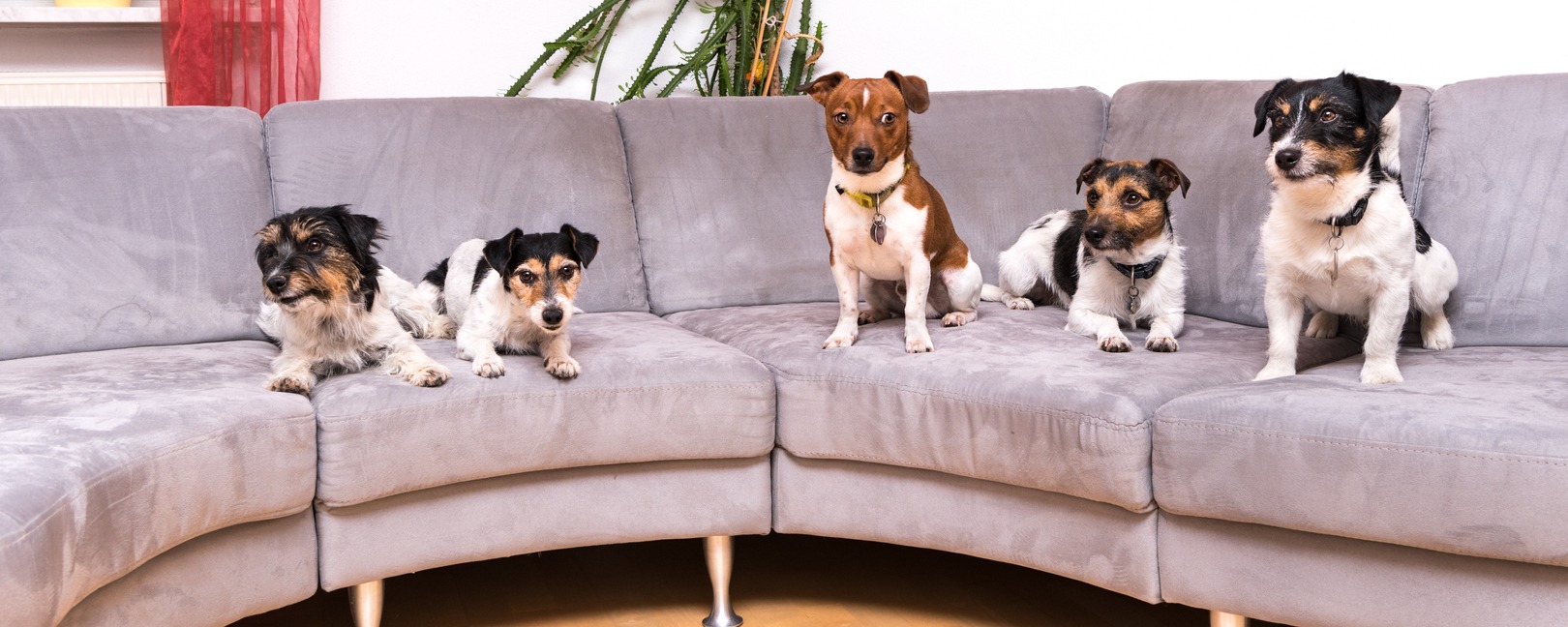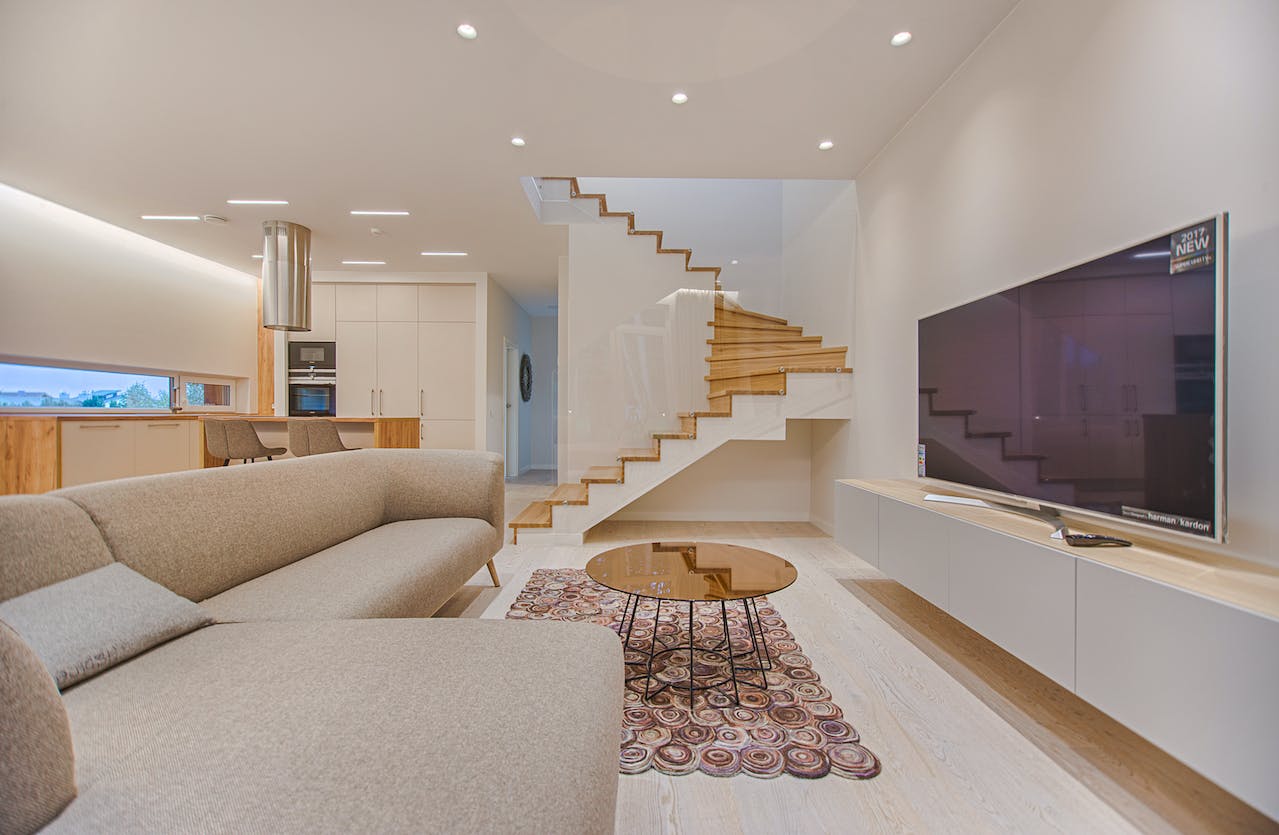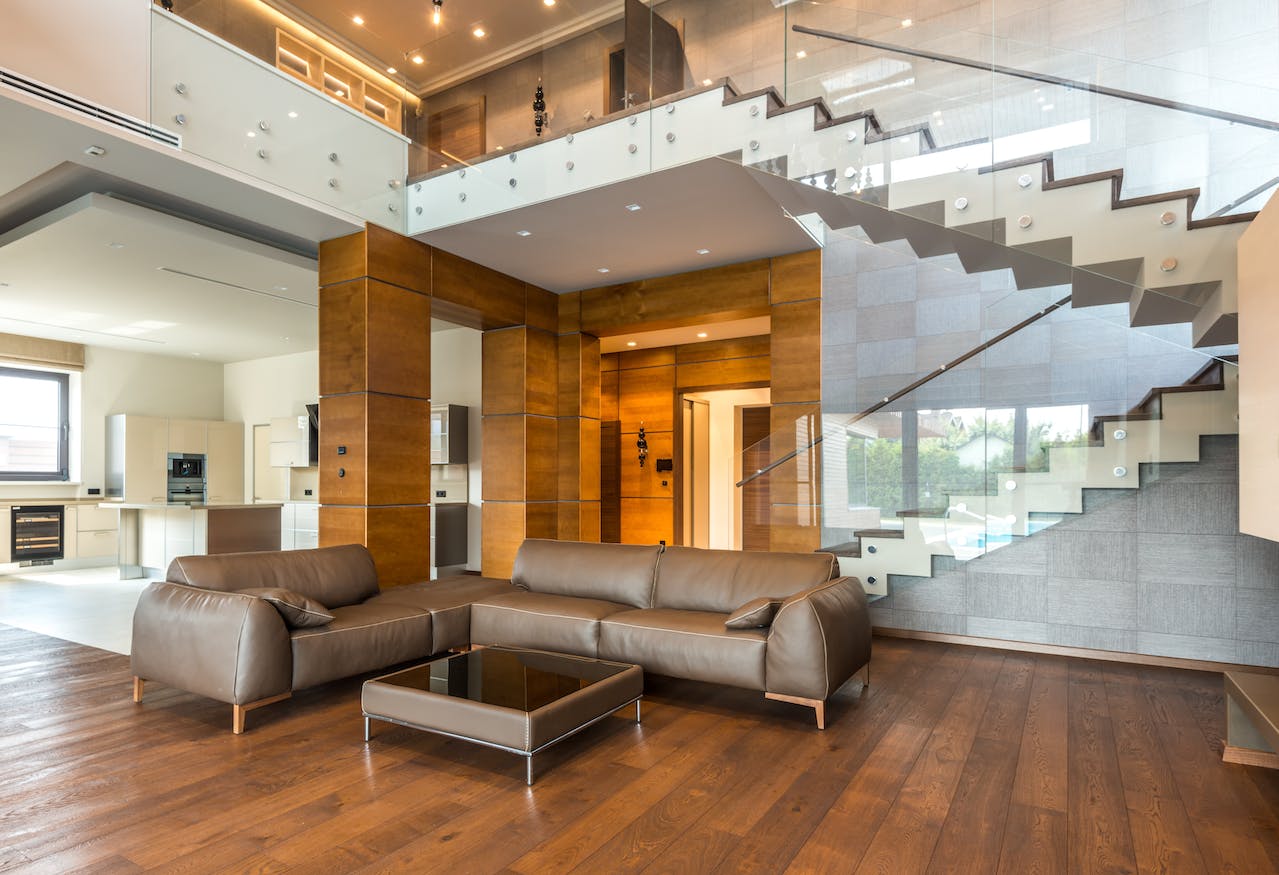Selecting the right material for a sectional sofa is essential for homes with pets, as durability and ease of cleaning are paramount. Pet owners must consider materials that can withstand the wear and tear from claws and teeth, as well as resist the occasional stain or fur accumulation. The market offers a variety of pet-friendly materials for sectional sofas that balance comfort, style, and functionality.
Leather, for example, is often recommended for pet owners due to its easy-to-clean surface and resistance to odors. It possesses a patina that can improve with age, even after minor scratches or interactions with pets. Alternatively, synthetic fabrics such as microfiber provide a more budget-friendly solution, offering stain resistance and ease of maintenance, typically being a favorable choice for homes with active pets.
When identifying the best materials for pet-friendly sectional sofas, it’s important to consider the specific needs of the pets and the lifestyle of the household. While some materials may offer a higher resistance to pet-related damage, others might be chosen for their comfort or aesthetic appeal. Balancing these factors ensures that pet owners don’t have to sacrifice style for practicality.
Understanding Pet-Friendly Materials
Selecting the right materials for sectional sofas ensures both comfort and durability when sharing your living space with pets. These materials are specifically structured to withstand the added wear that pets can apply.
Types of Pet-Friendly Fabrics
Pet-friendly fabrics are designed to resist stains, odors, and excessive wear. Leather is renowned for its resilience and ease of cleaning. It does not snag or rip easily, making it a good choice for homes with pets. An alternative to natural leather is faux leather, which offers similar benefits at a potentially more affordable cost.
Microfiber, a fine synthetic fabric, is another popular option due to its soft texture and resistance to pet hair and scratches. Fabrics such as denim and canvas also provide a durable exterior that withstands the rough and tumble of pet activity.
Advantages of Durable Materials
Durable materials like leather last longer and are more cost-effective over time, reducing the frequency of furniture replacement. These materials also tend to be easier to maintain, requiring simple wiping or vacuuming to remove pet hair and dirt. By investing in durable materials, pet owners can enjoy a pristine-looking sofa for years.
Innovative Performance Fabrics
Performance fabrics are the cutting edge of pet-friendly materials. They are crafted with the latest technology to offer superior stain resistance and longevity. Examples include acrylic fabrics and specially treated microfiber that repels liquids and prevents odors. These materials are also generally woven tightly, which helps prevent claws from catching and creating snags or tears.
Designing a Pet-Friendly Living Space
Creating a living space that accommodates pets requires thoughtful selection of materials and designs that cater to both aesthetics and functionality. Durability, ease of cleaning, and a style that complements the pet owner’s lifestyle are cornerstones of pet-friendly living room furniture.
Selecting the Right Sofa Design
When choosing a pet-friendly sectional sofa, one should opt for modular designs which offer flexibility and easy replacement of individual sections. Sofas with tight weaves and synthetic microfiber fabrics help resist pet hair, stains, and odors, while leather options are lauded for their ease of cleaning and scratch resistance. A tight weave and synthetic microfiber can be especially beneficial for pet owners, as they withstand wear and tear better than other fabrics.
Color and Aesthetic Considerations
Choosing the right color for a pet-friendly sofa involves balancing style and practicality. Darker colors and patterns are effective at concealing pet fur and stains. One might consider a color that matches the pet’s fur to make shedding less noticeable. Maintaining a consistent aesthetic with other living room pieces keeps the space cohesive.
Functional Features for Convenience
The functionality of living room furniture in a pet-friendly home should not be overlooked. Features such as removable cushion covers and washable fabrics can simplify the cleaning process. Sofa legs made of metal may be more durable and resistant to chewing or scratching. Secure, low-profile sofas might aid older pets who have trouble jumping onto higher furniture.
Fabric Choices for Pet Owners
When selecting a sectional sofa as a pet owner, durability, cleanability, and comfort are paramount. Here are some of the top fabric choices with their respective advantages and disadvantages.
Leather: Pros and Cons
Leather is a durable and easy-to-clean material, well-suited for pet owners. Real leather can withstand scratches and is less likely to attract pet hair. However, it is not entirely scratch-proof and can be costly.
- Pros:
- Durable and long-lasting
- Easy to wipe and clean
- Cons:
- Expensive
- Can sustain scratch marks
Microfiber and its Benefits
Microfiber is a synthetic fabric known for being soft and exceptionally pet-friendly. It repels water and resists claw marks successfully, making it an excellent choice for households with pets.
- Benefits:
- Stain and water-resistant
- Less likely to snag or scratch
Exploring Velvets and Chenilles
Velvet and chenille fabrics can offer a plush feel while also being suitable for pets to a certain extent. Synthetic velvet or low-pile velvets are easier for cleaning and less likely to retain odor.
- Velvet:
- Soft and luxurious feel
- Synthetic varieties are more pet-friendly
- Chenille:
- Resistant to fraying and tearing
- Can show fewer pet hairs
Other Pet-Friendly Fabric Options
Other materials like olefin fiber are also recommended for pet-friendly sofas as they are durable, fade-resistant, and easy to maintain. Fabrics treated with protective sprays like Scotchgard add an extra layer of protection against stains and odors.
- Examples:
- Olefin fiber: strong and water-resistant
- Treated fabrics: added stain and odor protection
The Importance of Stain Resistance
When selecting a sectional sofa for a home with pets, choosing one with stain-resistant properties is paramount. It ensures the longevity and appearance of the furniture, even in the face of pet accidents, spills, or muddy paw prints.
Stain-Resistant Technologies
Various technologies exist to make fabrics stain-resistant. Performance velvet is one such material that is not only soft to the touch but also designed to repel liquids, helping to prevent stains from setting. Another superior option is Sunbrella fabric, which is renowned for its durability and ease of cleaning, making it a favorite for pet-friendly homes.
Fabric treatments like Scotchgard are an additional layer of defense used to protect sofas from potential stains. This treatment forms a protective barrier on the fabric surface, causing liquids to bead up and roll off rather than soaking in. It is recommended for pet owners to select a sofa that either comes with such protective coatings or is amenable to aftermarket treatments for optimal stain resistance.
Maintaining Stain Resistance
After the initial purchase, the maintenance of a sectional sofa’s stain resistance is critical. Pet owners should regularly vacuum their sofas to remove pet hair and dander, which can lead to stains if left unattended. In the case of spills, immediate action is beneficial; a quick response with a soft dry cloth can prevent a potential stain from becoming permanent.
Proper upkeep also extends to occasional deeper cleans, ideally with products specifically prescribed for stain-resistant fabrics. This helps maintain not only the cleanliness but also the integrity of the fabric’s protective qualities. Owners should consult the manufacturer’s guidelines for the best practices in maintaining their specific sofa material type.
For ongoing stain resistance, reapplication of Scotchgard or similar protectants every few months can help maintain the sofa’s resilience against the rigors of a pet-friendly household.
Furniture Features for Pet Owners

When selecting a sofa, pet owners should prioritize features that combine functionality and comfort for both humans and pets. Ideal furniture pieces include easily maintainable surfaces and amenities that cater to a pet’s needs.
Removable and Washable Covers
- Removable Cushion Covers: These allow for effortless cleaning and maintenance. Sofa owners can simply remove and wash the cushion covers to eliminate pet hair, dander, and occasional stains.
- Materials: Durable fabrics like microfiber or certain leathers can withstand frequent washing. Pet owners should look for machine-washable cover materials that retain their shape and texture after cleaning.
Built-In Solutions for Pet Needs
- Pet Beds: Some sofas come with built-in pet beds, offering a dedicated space for dogs or cats to rest comfortably, without taking over the entire sofa.
- USB Chargers: A built-in USB charger is a useful feature, allowing pet owners to charge devices without leaving the sofa, which can be especially handy when pets are snuggling with their owners.
- Deep Seats: Sectionals with deeper seats accommodate pets and owners together, providing enough space for everyone to relax without feeling cramped.
By focusing on these specific furniture features, pet owners can ensure their home remains stylish while being fully functional for their furry friends.
Sofa Structure and Durability
When selecting a pet-friendly sectional sofa, the structural integrity and the quality of construction are crucial to ensure longevity and maintain comfort. A robust frame and high-quality cushioning are key to a sofa that withstands the activity of pets.
Frame and Construction Quality
The foundation of any sectional sofa is its frame, with baltic birch being a superior choice due to its strength and durability. Brands like Allform and Burrow leverage this material in their products, such as the Burrow Block Nomad Sofa, to ensure a sturdy build. Sectionals should have a solid, heavy-duty frame that resists warping over time. This is particularly important in pieces like the West Elm Newport 2-Piece Chaise Sectional, which combines style with a strong frame that can handle the extra wear and tear from pets.
- Key materials for frames:
- Baltic birch
- Hardwood
- Metal (less common for sectionals)
- Notable brands and models:
- Allform sectional sofas
- Burrow Block Nomad Sofa
- West Elm Newport 2-Piece Chaise Sectional
Cushioning and Comfort
The right cushioning not only contributes to the comfort but also affects the sofa’s resilience to pet activity. A sofa bed, for example, such as the Joybird Braxton Sleeper Sofa, integrates adaptability with comfort, offering a multi-functional piece that doesn’t compromise on durability. The Ektorp Sofa, often chosen for family households with pets, provides removable cushions that are easy to clean and maintain. Sectionals, in general, benefit from high-density foam or a blend of down and foam, which provide both comfort and a longer life-span even with pets lounging on them.
- Ideal cushion materials:
- High-density foam
- Down blend
- Examples of sofas with durable cushioning:
- Ektorp Sofa with its removable cushions
- Joybird Braxton Sleeper Sofa
Choosing a sectional sofa that integrates a robust frame with high-quality cushioning will result in a durable, pet-friendly addition to any home.
Care and Maintenance of Pet-Friendly Sofas
Maintaining a pet-friendly sofa requires routine cleaning and preventive measures. These practices ensure that sofas retain their comfort and appearance despite the wear and tear from pets.
Cleaning Tips for Pet Owners
Regular cleaning keeps pet-friendly sofas looking their best and helps to prolong their life span. Owners of leather couches can wipe down surfaces with a damp cloth to remove pet hair and dander, followed by a leather conditioner to keep the material supple. For microfiber couches, a vacuum cleaner with an upholstery attachment is effective in lifting pet hair. Stains can typically be treated with a mild fabric cleaner, applying it to the affected area and using a soft-bristled brush if necessary. Couch options made from canvas or denim can handle more rigorous scrubbing, as these materials are known for their durability and ease of cleaning.
- Leather: Wipe and condition regularly
- Microfiber: Vacuum and use mild fabric cleaner
- Canvas/Denim: Scrub with suitable cleaners
Protecting Your Sofa from Pets
Preventive measures can greatly deter pets from causing damage to sofas. Using throws or pet covers not only protects sofa surfaces but also makes for easy cleaning—simply remove and wash as needed. Double-sided tape or plastic couch protectors can discourage pets from scratching, while providing a designated pet bed nearby might attract pets away from the sofa. For a more integrated approach, choosing couch options with removable, washable cushion covers allows for easy laundering without compromising the sofa’s structure.
- Throws/Pet Covers: Washable and protective
- Deterrents: Double-sided tape, plastic protectors
- Pet Beds: Encourage pets to use their own space
- Washable Covers: Convenient for frequent cleaning
Budget Considerations for Sectional Sofas
When selecting a pet-friendly sectional sofa, homeowners should balance cost-effectiveness with the durability that will stand the test of time. The key is to find a robust piece of furniture that offers the most value within one’s budget.
Investing in Longevity vs. Upfront Cost
A pet-friendly sectional sofa should be seen as an investment. Modular sofas potentially offer a higher upfront cost, but their long-lasting materials and replaceable sections can lead to reduced expenses over time. It is often more economical to pay a bit more initially for a sofa that will withstand the wear and tear of pets rather than spending on frequent replacements.
- Initial Cost: Higher upfront for quality and durability
- Long-Term Savings: Less frequent replacement or repair costs
Evaluating Price Points of Different Materials
The price of pet-friendly sofas varies widely based on the materials used. Owners should consider price points in the context of pet behavior and the potential for damage.
- Leather: High resistance to odors and a premium look but at a higher cost.
- Polyester: A more affordable choice with good durability and easy cleaning.
For pet owners, the materials chosen should offer a balance between comfort for the pets and resistance to damage, leading to a more cost-effective purchase in the long run.



